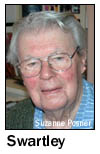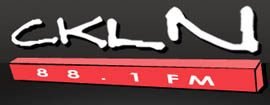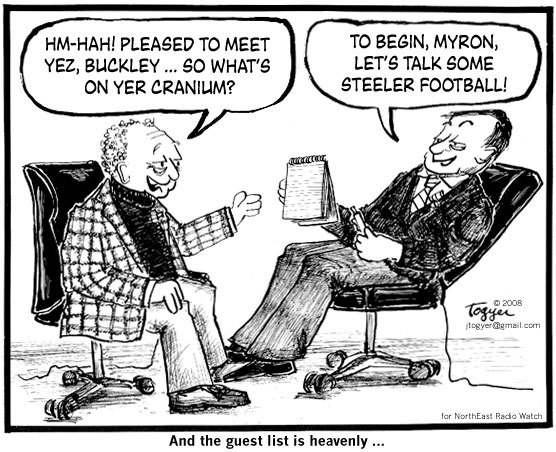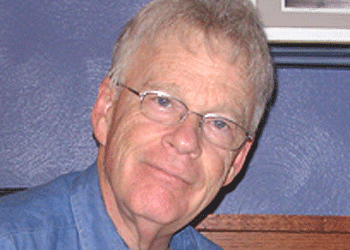From the NERW Archives
Yup, we’ve been doing this a long time now, and so we’re digging back into the vaults for a look at what NERW was covering one, five, ten and – where available – fifteen years ago this week, or thereabouts.
Note that the column appeared on an erratic schedule in its earliest years as “New England Radio Watch,” and didn’t go to a regular weekly schedule until 1997.
One Year Ago: March 6, 2012 –
*Who wants one of the last big-market FM signals to become available in CANADA? Just about everyone, at least judging by the list the CRTC released last week in preparation for a May 7 hearing at which it will decide who inherits the 88.1 frequency that became open in Toronto when community station CKLN lost its license last year.
In all, 22 broadcasters submitted proposals to use 88.1, and they fall broadly into three categories:
 Existing stations seeking a better signal: The 88.1 signal’s not a great one to begin with – just a few hundred watts from the First Canadian Place tower in downtown Toronto – but it’s still better than some of the even more minimal signals that have been crammed on to the Toronto dial in recent years. Existing stations seeking a better signal: The 88.1 signal’s not a great one to begin with – just a few hundred watts from the First Canadian Place tower in downtown Toronto – but it’s still better than some of the even more minimal signals that have been crammed on to the Toronto dial in recent years.
Evanov’s gay-oriented CIRR (103.9 PROUD FM), French community station CHOQ (105.1) and Fitzroy Gordon’s new urban station, CKFG (98.7) are all asking to go to 88.1 as an upgrade. Two big AM signals, Radio-Canada’s CJBC (860) and MZ Media’s CFZM (740), are asking to use 88.1 as a nested relay to overcome AM signal problems in downtown Toronto. (Yes, both stations run huge 50 kW non-directional signals on AM from a site out at Hornby, northwest of Toronto, but they argue that electrical interference from streetcar lines and other sources wipes out those signals downtown. That’s the same argument the CBC made back in 1999, when it moved Radio One from 740 to 99.1.)
New commercial signals from big players – and small. Several of the very biggest players in Canadian radio, including Corus and Bell Media, already have the maximum number of stations allowed in Toronto. But even with those giants out of the picture, there are plenty of other commercial groups that would love a new voice in the nation’s biggest market. Newcap wants to use 88.1 for a “modern adult music” format, Montreal’s Tietolman-Tetrault-Pancholy group wants to do talk, Larche Communications seeks a “rock-based Adult Album Alternative” format, Durham Radio (which owns suburban station CJKX in Ajax) wants “new easy listening music,” and Barrie’s Rock 95 Broadcasting wants “Indie music.” Frank Torres, owner of Ottawa’s “DAWG FM” (CIDG 101.9), wants a commercial signal that will play at least 20% jazz and blues, while Michael Wekerle proposes a commercial triple-A format.
New community/ethnic stations. Since CKLN was a community/campus station, one might suspect the CRTC will want to keep the frequency dedicated to that use. (Unlike in the US, there are no channels in Canada permanently set aside for noncommercial or community use.)  With that in mind, ten broadcasters have applied for new signals with specialty formats. Barrie-based Trust Communications Ministries and Toronto-based Family FM Inc. propose religious stations, Stanislaus Anthony wants an “emerging genres music format,” Tosan Lee wants a “world-beat” station, and there are plenty of proposals for new multi-ethnic stations, including one that would add an additional signal to CHIN’s existing AM 1540 (with an FM relay at 91.9) and CHIN-FM 100.7. And there’s the expected application from Ryerson University’s Radio Ryerson Ltd., which proposes returning 88.1 to Ryerson, where CKLN started. With that in mind, ten broadcasters have applied for new signals with specialty formats. Barrie-based Trust Communications Ministries and Toronto-based Family FM Inc. propose religious stations, Stanislaus Anthony wants an “emerging genres music format,” Tosan Lee wants a “world-beat” station, and there are plenty of proposals for new multi-ethnic stations, including one that would add an additional signal to CHIN’s existing AM 1540 (with an FM relay at 91.9) and CHIN-FM 100.7. And there’s the expected application from Ryerson University’s Radio Ryerson Ltd., which proposes returning 88.1 to Ryerson, where CKLN started.
So who wins? We’ll get a better sense of the CRTC’s thinking at the May 7 hearing – but if we were in a betting mood, we’d speculate that the agency won’t look favorably on the CFMZ and CJBC applications, since they won’t add a new voice to the Toronto dial. The applications from CIRR, CKFG and CHOQ would open up those stations’ existing facilities for new users, but those signals are so small as to be of at best limited value to anyone else. (There would be a certain irony, one supposes, in the CRTC’s approving CKFG for a move to 88.1 and then giving 98.7 to CJBC for a nested relay after all the objections the CBC made to the use of 98.7 in Toronto in the first place…)
If the CRTC thinks there’s room for another commercial operator in the market, it will be looking for an operator with the resources to fully commit to a battle against the big Corus, Astral and Bell clusters, and we’d think that might mean an edge to either Newcap’s deep pockets or Durham’s ability to cluster with its Ajax and Hamilton signals. 2013 update: It’s hard to outguess the CRTC, isn’t it? The nod for 88.1 ended up going to the Barrie-based proposal for a new alternative rock station, expected to sign on soon as “Indie 88.1,” CIND.
*There’s now just one public radio operation in western NEW YORK. The merger of WBFO (88.7 Buffalo) into its erstwhile rival, WNED (970 Buffalo), went off right on schedule Thursday afternoon at 4 with a recorded announcement that aired on both stations as they entered their new simulcast from WNED’s studios in downtown Buffalo. (Just in case the switchover didn’t work properly, WBFO’s Mark Scott was on hand at the former WBFO studios to run “All Things Considered” from there, we’re told!)
Now that the full schedule for the merged operation is out, it’s clear that WNED is absorbing more of WBFO’s DNA than many observers had expected. The first local voice heard on the merged signal was former WBFO host Mark Wozniak, who’ll be hosting “All Things Considered” on WBFO/WNED, and while he opened his first newscast as “Mark Wozniak, WNED News,” most of the branding for the rest of the show was “WBFO,” the AM section of the website now redirects to WBFO.org, and the daytime programming on 88.7 and 970 is a mix of the old 88.7 and 970 schedules: “On Point” and “Here and Now” from WNED, “Tell Me More” and “Talk of the Nation” from WBFO.
Aside from Wozniak and former WBFO news director Eileen Buckley, most of the news staffers now heard on WBFO come from the WNED side, including news director Jim Ranney and “Morning Edition” host Jay Moran.
*Longtime NERW readers know we’ve been fascinated over the years, in a sort of a can’t-avert-your-eyes-from-a-car-crash way, with the bizarre filings that seem to keep appearing in the FCC database for WJJL (1440 Niagara Falls).
Back in 2006, WJJL’s real licensee, M.J. Phillips Inc. (M. John Phillips), had to spend some legal time making sure the FCC correctly processed its own renewal application for the station instead of the phony app that was submitted by one “Joann Nicola Lutz Distefano Phillips,” who tried to convince the Commission that she was married to WJJL’s owner and had somehow come into control of the station.
Then “Joann” filed again in December 2011, attempting (in two separate filings) to transfer control of WJJL – and this time, the station fired back more aggressively. In addition to WJJL’s own transfer filing, belatedly taking the station out of “debtor-in-possession” status, Phillips’ lawyer sent the FCC a lengthy letter demanding the dismissal of all five filings made so far by “Joann” under her various names.
The letter is well worth reading in its entirety, but here’s the gist: there really is a “Joann Nicola Lutz Distefano” who hosted a weekly show on WJJL in late 1997 and was fired fairly quickly – and since 2004, Phillips has been fighting all kinds of aggravation from her. It’s not just the FCC filings or the message-board postings that first brought her to our attention; it’s also included interference with WJJL’s advertisers, and according to the FCC letter, it has now escalated into a criminal complaint against Distefano, who apparently now lives in a mental health shelter in Brooklyn. “It is time for this vindictive conduct to end,” says WJJL’s attorney James R. Cooke, and the FCC apparently agreed; it quickly dismissed the outstanding transfer applications, ending at least this chapter of a truly bizarre radio tale.
Five Years Ago: March 4, 2008 –
*It’s beginning to sound like a broken record (remember those?) – Big Conglomerate Broadcaster posts bad quarterly earnings results, and within a day or two, dozens more talented broadcasters are out on the streets, never mind how good their ratings might have been or how many years they’d been with the station.
The disease seems to be working its way through all the big “C” companies, first with CBS Radio and Clear Channel earlier this year. On Leap Day Friday, it was Citadel’s turn, as the company reeled from the losses that followed last year’s ambitious purchase of the ABC Radio assets, which helped drag its stock down to the $1 level from a year-ago high of $10.40 per share.
After posting a net loss for the quarter of $848 million, the job cuts came fast and furious at most of the former ABC Radio properties. In Atlanta, nearly the entire airstaffs at WKHX(FM) and WYAY(FM) were history; in Washington, smooth jazz WJZW(FM) and its airstaff were gone, replaced with automated “True Oldies”; in Chicago, much of the news staff at WLS was history – and in New York, WABC (770) and WPLJ (95.5) were not immune. 
At WABC, the cuts claimed John R. Gambling, the third-generation talk host who came to the station in 2000 after his Rambling With Gambling morning show was cancelled by WOR following an amazing 75-year run. In his place, former WABC morning host Curtis Sliwa, relegated to a 5-6 AM talk hour, will move to the 10-11:45 AM slot preceding Paul Harvey and Rush Limbaugh. But newsman George Weber, who’d been Sliwa’s sidekick in the early mornings, won’t join him on his new shift – Weber’s out as well.
Down the hall at WPLJ, the “Rocky Allen Showgram” is history as well. Allen, who did afternoons on WPLJ from 1993-1998, then spent just over a year on WABC, returned to WPLJ in 2005 along with his sidekick Blain Ensley. For now, their show has been replaced by middayer Race Taylor, but bigger changes may be afoot at WPLJ. While the station’s lackluster ratings performance has long been excused by some of the biggest revenues in the market, Citadel officials say that’s changing.
In a Friday conference call, Citadel’s Farid Suleman said CBS Radio’s competing hot AC entry, “Fresh” WWFS (102.7), had cut into WPLJ’s performance.
*The week’s other big radio headline came from upstate, where Rochester’s Brother Wease announced he’s returning to the airwaves, just a month after contract negotiations between the veteran morning talker and his longtime radio home, WCMF (96.5), broke down.
We’d been hearing lots of rumors about Wease being seen in the hallways at Clear Channel, the biggest local competitor to WCMF’s new owners, Entercom – and it turns out that the corporate hiring freeze at Clear Channel wasn’t as rock-solid as it appeared to be, since the company will hire Wease to be the new morning voice at its classic rocker, “Fox” WFXF (95.1 Honeoye Falls).
Current “Fox” morning man J.P. Hastings won’t be vacating his chair right away, though. Because of Wease’s non-compete with Entercom, his return to the Rochester airwaves may not happen until this fall. In the meantime, Wease will be working off the air at Clear Channel, mostly in the sales department, though he tells us he’s also booking some guests on Bob Lonsberry’s talk show at Clear Channel’s WHAM (1180).
Wease’s crosstown move sets up an interesting morning showdown: his former sidekicks, including comedian Tommy Mule and producer Bill Moran, remain at WCMF as the hosts of that station’s replacement morning show, which means Wease will have to hire a new morning crew for his “Fox” debut later this year.
He’s done that before, as former sidekicks including Stephanie Miller, B.J. Shea and Gregg “Opie” Hughes have moved on to bigger things, but this is the first time he’ll be competing directly against his former co-workers. (Including, we’d note, his former colleague Dave Kane, whose midday show on WCMF will air against the last hour or so of Wease on WFXF.)
*There’s a new format coming to Buffalo this morning, as Dick Greene takes control of WECK (1230 Cheektowaga) from Regent, replacing the classic country format with a new lineup of talk programming anchored by veteran Buffalo talents Harv Moore (late of WHTT) and Tom Donohue (most recently with WLKK) in morning drive. The schedule will also include some programming heard on Greene’s Niagara County outlet, WLVL (1340 Lockport), such as “Tradio” and a 10 AM talk show hosted by Scott Leffler. Tom Schuh, formerly with Entercom, is the PD of the station, which will also include syndicated talkers Bill O’Reilly, Neal Boortz, Dennis Miller and Jim Bohannon, plus Fox Sports overnight and on weekends.
*With all of William F. Buckley’s many interests (he was, among other things, a connoisseur of peanut butter), it should come as no surprise that there was a broadcast connection in his life even deeper than his decades as host of “Firing Line.” Buckley, who died Wednesday (Feb. 27) at 82, served from 1973-75 as chairman of Starr Broadcasting, which owned WNCN (104.3 New York), and what a tumultuous time that was: in 1974, Starr flipped WNCN from its longtime classical format to rock under the new calls WQIV.
Back when the FCC paid attention to stations’ format choices, that flip was a big deal – so big, in fact, that the “WNCN Listeners’ Guild” prodded Starr into flipping the station back to classical and selling it to GAF Broadcasting. (It was in the aftermath of the WNCN brouhaha that the FCC got out of the format-regulation business; 18 years later, GAF flipped WNCN back to rock as WAXQ without much of an outcry.)
*Perhaps the most famous voice in PENNSYLVANIA sports broadcasting history has been silenced.
Myron Cope died Wednesday (Feb. 27) at 79, ending a career that included 35 seasons as color announcer for the Pittsburgh Steelers, as well as a 22 year run, from 1973-1995, as host of the city’s first sports talk show, on the former WTAE (1250) and many years as a sports commentator on WTAE-TV (Channel 4).
Cope, born Myron Kopelman, already had a distinguished career as a print writer at the Pittsburgh Post-Gazette and later in magazines such as The Saturday Evening Post when he was recruited for the Steelers’ radio team in 1970. His unusual turns of phrase – both Yiddishisms such as “Yoi!” and catchprases such as “The Immaculate Reception,” for the pass that won the 1972 Steelers their Super Bowl championship – endeared Cope to generations of Steelers fans. He even created one of the team’s icons, the “Terrible Towel” that began waving from the stands at the old Three Rivers Stadium in 1975. Cope retired from the Steelers’ broadcast booth in 2005 as he fought a series of illnesses that included a growth on his vocal cords; the next year, he donated the trademark rights to the Terrible Towel to the Allegheny Valley School, where his autistic son, Daniel, has lived most of his life.
Fittingly, a sea of Terrible Towels waved in front of Pittsburgh’s City Hall Friday during a memorial ceremony for Cope, as the city said “Bye, now” to the man so closely associated with all those winning seasons. (And we welcome cartoonist and PBRTV.com contributor Jason Togyer to the pages of NERW with this drawing imagining the most popular talk show in the afterlife this week…)
 *In VERMONT, Pamal has split what’s now WDVT (94.5 Rutland) away from “Cat Country,” which is now heard solely on its new home at 105.3, WJEN (ex-WEBK Killington). The new format on 94.5, which launched Feb. 22 at 6 AM, is classic hits “The Drive.” *In VERMONT, Pamal has split what’s now WDVT (94.5 Rutland) away from “Cat Country,” which is now heard solely on its new home at 105.3, WJEN (ex-WEBK Killington). The new format on 94.5, which launched Feb. 22 at 6 AM, is classic hits “The Drive.”
Ten Years Ago: March 3, 2003 –
With a network of seven primary FM signals and translators that stretches north to Plattsburgh, south to Middletown, west to Oneonta and east to Southington, Connecticut, WAMC (90.3) in Albany, NEW YORK has become one of the larger public radio broadcasters in the country in recent years. Now the network is adding its first AM signal, as it pays Ed Levine’s Galaxy Communications $500,000 for WHTR (1400 Albany), a 1 kilowatt facility that’s spent the last few years simulcasting other stations in Levine’s cluster (most recently, modern rock WKRD 93.7 Scotia), but which has a proud history under the WABY calls which still adorn its tower on Braintree Street in Albany.
WAMC head honcho Alan Chartock tells the Albany Times Union that the AM 1400 signal will fill some holes in the main WAMC signal within city limits; the big FM signal comes from across the state line on Mount Greylock in Adams, Massachusetts and has some multipath problems in parts of Albany. Expect 1400 to change calls to WAMC(AM) and begin simulcasting the WAMC-FM signal within the next couple of months, we hear….
Moving down the Hudson Valley, Albany’s Pamal group is wasting no time in its takeover of WYNY (107.1 Briarcliff Manor) from Nassau; it will LMA the station and begin a simulcast of CHR WSPK (104.7 Poughkeepsie) within the next few weeks.
And another part of the 107.1 quadcast could soon be sold; our colleague Tom Taylor reported a rumor in Inside Radio last week that Jarad, owner of Long Island’s WLIR (92.7 Garden City), WDRE (98.5 Westhampton) and WXXP (105.3 Calverton-Roanoke), is looking to buy WWXY (107.1 Hampton Bays) to add to its cluster out there. That would leave Nassau with WWYY (107.1 Belvidere NJ) and WWZY (107.1 Long Branch NJ), closer to its core of stations in New Jersey and Pennsylvania.
In PENNSYLVANIA, Rick Strauss is out as program director of classic rocker WMGK (102.9 Philadelphia); former ‘MGK PD Buzz Knight is programming the station for now from his post as PD of Greater Media sister station WROR (105.7 Framingham) up in the Boston market.
Just south of Pittsburgh, Washington and Jefferson College’s WNJR is powering up. Formerly a class D station with just 13 watts on 92.1, WNJR has made the move to class A status and 91.7 on the dial. Its new 950-watt signal now carries almost to Pittsburgh from its base in Washington, PA.
And there’s a void this week in the hearts of all of us of a certain age, with news of the death on Thursday (Feb. 27) of Mister Rogers. Fred McFeely Rogers was part of Pittsburgh’s WQED-TV (Channel 13) beginning in 1953, even before the station went on the air; in 1966, WQED became the home base for “Mister Rogers’ Neighborhood,” and the show has been a PBS staple ever since, even though production of new shows ended several years ago. Upon word of Rogers’ death (he was 74 and was suffering from stomach cancer), WQED preempted its full evening of programming to devote four hours to remembering the station’s most famous personality.
Fifteen Years Ago: March 5, 1998 –
We begin this week’s news with the passing of two of the industry’s giants. W. Gordon Swan was on the air at the Boston area’s first radio station, Tufts University’s WGI Medford Hillside…way back in 1922. Two years later, he joined the staff of Westinghouse’s WBZ/WBZA in Boston, rising through the ranks until becoming program director. Swan was instrumental in bringing television to New England, as program director of WBZ-TV when it signed on in 1948. Swan remained with WBZ radio and television until his retirement in 1968. In recent years, Swan was writing a memoir of his days in broadcasting. Gordon Swan died Sunday at a nursing home in Kingston, Massachusetts. He was 92 years old.
The medium Swan helped create was later polished to a high sheen by Fred W. Friendly. As Ed Murrow’s producer on “See It Now,” and later as president of CBS News and as a statesman of the industry, Friendly stood for the highest values of broadcast journalism throughout his long career. He was also a veteran of New England radio, having started his career at WEAN (now WSKO) in Providence. Friendly was 82.
In upstate NEW YORK, things are finally settling down at the Jacor group of stations in Rochester. The FCC database lists new calls of WYSY and WISY for “Sunny 106,” the erstwhile WMAX-FM (106.7 Irondequoit) and WMHX (102.3 Canandaigua), as well as a new call of WMAX-FM for “Jam’n 107,” heretofore WRCD (107.3 Honeoye Falls) — but as of Thursday evening, all three stations are still using their old calls. NERW suspects the WMAX-FM calls are being warehoused at 107.3 until they can be shipped off to one of the other “Max”es around the country (perhaps Greater Media’s WXXM Philadelphia?) .
Jam’n remains jockless for now, as does “Mix 100.5” (WVOR) outside morning drive…but NERW heard former WMAX afternoon jock Michael Gately doing a liner on WVOR this afternoon. Across town at WPXY (97.9), morning show producer Jim Eiseman has left the station “to pursue other opportunities.”
Big City Radio’s New York City-area stations are all getting power boosts. The FCC has approved power increases for the “Y107” trio of WWXY Briarcliff Manor, WWVY Hampton Bays, and WWZY Long Branch NJ will all increase their power in the next few months on 107.1.
On to MASSACHUSETTS, where we find a new owner for Worcester’s WORC (1310). Andrew Davis’ Davis Radio Corporation gets $715,000 for the talk station, whose new owner is Chowder Broadcasting Group. If the name sounds familiar, that’s because the Chowder-heads (sorry…) recently bought WGFP (940) and WXXW (98.9) down in Webster. WGFP and WORC will make a worthwhile combination in Worcester County, with WGFP neatly filling the huge southern null in WORC’s signal, which protects co-channel WICH in Norwich CT.
In CONNECTICUT, it’s musical studios for two of Hartford’s rock stations. No sooner did WHCN (105.9) vacate its Asylum Avenue home for SFX’s corporate digs at 10 Columbus Drive, then WCCC (106.9/1290) came along to buy the old house on Asylum. It’ll be a return home for ‘CCC afternoon guy Michael Picozzi, who worked at WHCN on Asylum until last year. (It’ll also be a big move up from the little building on South Whitney Street that WCCC has called home since the early eighties.)
The FCC paid a call on “La Nueva Radio Musical” in New Haven on Tuesday, warning operators Pedro Jimenez and Hipolito Cuevas that they faced a $10,000 daily fine if they continued operating the unlicensed station on 104.5 MHz. The New Haven Register reports Jimenez and Cuevas told the FCC that their station wasn’t a pirate but a “microbroadcaster,” but agreed to shut the transmitter off. Jimenez and Cuevas told the Register they think the FCC crackdown was prompted by a complaint from WYBC (94.3), which they accuse of being unfriendly to community broadcasters. WYBC has been in the media spotlight recently for its attempts to take over urban-formatted WNHC (1340).
Finally this week, a note from across the border: It won’t be an April Fools joke when CHSJ in Saint John, New Brunswick turns off its AM 700 transmitter April 1. That’s when the station will complete its move to 94.1 FM — and disappear for good from New England’s radio dial. Get those QSL cards in while you can…
CHSJ’s not the only one vacating FM across the border; CKLY (910) in Lindsay, Ontario has been granted 91.9 MHz and will leave AM three months after the FM signs on. And CJEM in Edmunston, New Brunswick, just across the border from Madawaska, Maine, has been granted a move from 570 kHz to 92.7 MHz. |





















